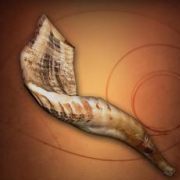The Parable/Mystery of the Mustard Seed, Part 1
The Parable/Mystery of the Mustard Seed, Part 1
Jesus taught His disciples “mysteries of the kingdom of the heavens…things kept secret from the foundation of the world.” Matt. 13:11, 35 In the seven primary parables He taught in Matthew 13, in every case the mysteries are hidden within symbolic imagery. Some of that imagery is only found within the Torah and Tanakh, that is, within the Hebraic roots of godly faith. Such is the case with the parable/mystery of the mustard seed:
Matthew 13:31 Another parable put He forth unto them, saying, “The kingdom of the heavens is like unto a mustard seed, which a man took and sowed in his field, 32 which indeed is the least of all seeds; but when it is grown it is greater than all the herbs and becomes a tree, so that the birds of heaven come and dwell in its branches.
This is the third of Matthew 13’s parables. In the previous two, a seed represented 1) “the Word of the kingdom,” and 2) a “son of the kingdom,” i.e., a person in whom has been planted that Word. 13:19, 38 “The one sowing…is the Son of Man.” 13:37 “The field is the world.” 13:38
Clear enough so far. As is the symbolism of the mustard seed, being “the least/smallest of all the seeds,” which represents the humble nature and beginning of the Gospel Word in its going forth. This seed/Word, however, is then to grow “greater [than] the herbs, and become a tree…”
Now, according to one popular teaching, this means that the original humble Church would undergo a freakish mutation, by which its original humble and benign nature would be perverted into something evil. This interpretation, however, does not fit within the symbolism of the previous two parables. In the very worst cases of those, the seeds sown by the Sower only failed to fulfill their purpose, becoming dead or unproductive (13:19-22): they never mutated into something else, something evil. The only evil and counterproductive seeds mentioned were ones sown by “the devil/diabolos.” 13:39 Conclusion: Christ only sows good seed, that which cannot ever, by its very nature, become evil.
“Aha,” that popular teaching rationalizes, “but the birds in the mustard seed’s branches represent, according to Christ’s first parable, ‘o poneros/the evil [thing/nature].’” The plural “birds,” in both the first and this third parable, cannot in context mean the devil, because there is only one “the devil,” just as there is only one Sower. However, ones having an evil nature – whether ourselves, other people, or spirits – are used by the devil to fulfill his purposes.
Why then would evil birds dwell within the branches of the fully-grown Church/mustard seed?
The answer to this mystery of the birds is revealed in the Tanakh/Old Testament, as well as other records from the Hebraic roots of the faith. No amount of post-Gospel rationalism can decipher the meaning. And so is fulfilled the eighth, summary parable of Matthew 13:
Matthew 13:52 Therefore every scribe having been instructed concerning the kingdom of the heavens is like a man, a housemaster, who brings out of his treasure new things and old things.
Man’s earthly house is his body, and the master thereof is (or should be) his soul. 2 Cor. 5:1 A soul’s treasures include wisdom, understanding and knowledge of the Word of God, both new (Church) and old (Hebraic). That Word includes instruction and knowledge about “the kingdom of the heavens.”
So what is the kingdom of the heavens, and what are the birds? To be explained in Part 2.



0 Comments
Recommended Comments
There are no comments to display.